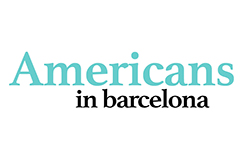Barcelona has inspired great novels. And today, we are proposing 5 literary trails in Barcelona based on 5 novels that have Barcelona as their main setting. Would you like to discover Barcelona from its most literary point of view? Don’t miss today’s post!
The Shadow of the Wind
It’s the summer of 1945, and Daniel Sempere discovers the alley that hides the entrance to the Cemetery of Forgotten Books…
Raval quarter: The Cemetery of Forgotten Books
Among literary trails in Barcelona, this is probably on of the most famous. We find this starting point of the novel, the entrance to the Cemetery of Forgotten Books, in the street Arc del Teatre. This arch is reflected in the words “Upon reaching Arc del Teatre Street, we ventured down the path towards Raval under the arch that promised a vault of blue mist. (…)” This is where Daniel Sempere finds the last copy of The Shadow of the Wind by Julián Carax. A place that probably only exists in fiction, but whose entrance is inspired by this arch!
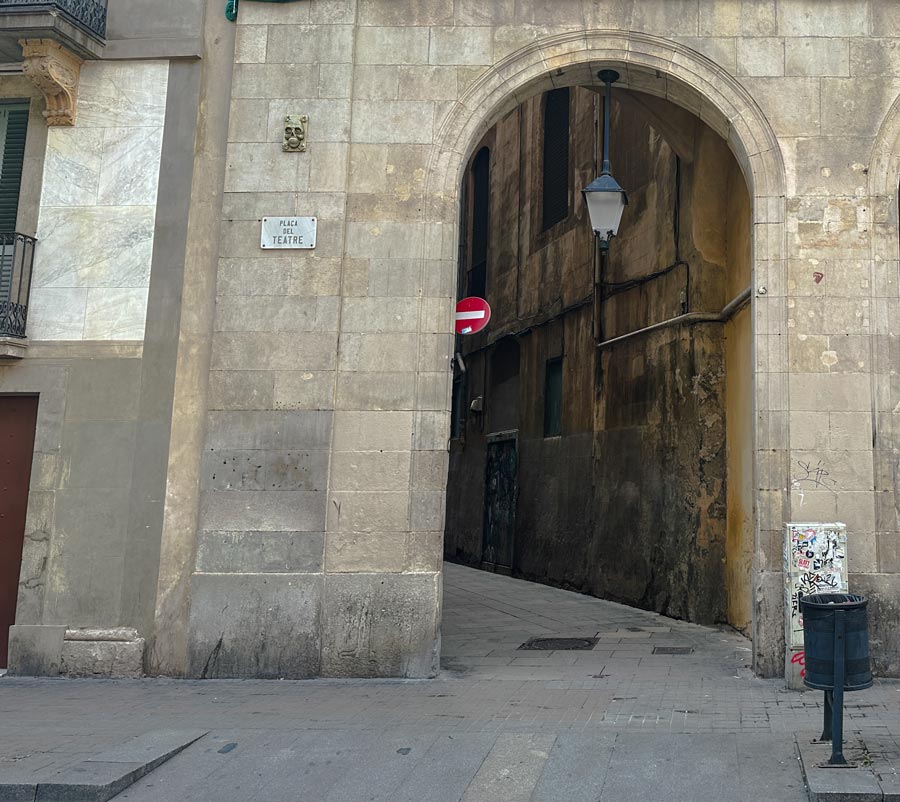
Gothic quarter: the Sempere family library
And from Raval, we move to the Gothic quarter. Because at 27 Santa Anna Street is where the Sempere family had their library. What can we find there today? An iconic glove shop, whose historical aesthetics are linked to the book’s descriptions…
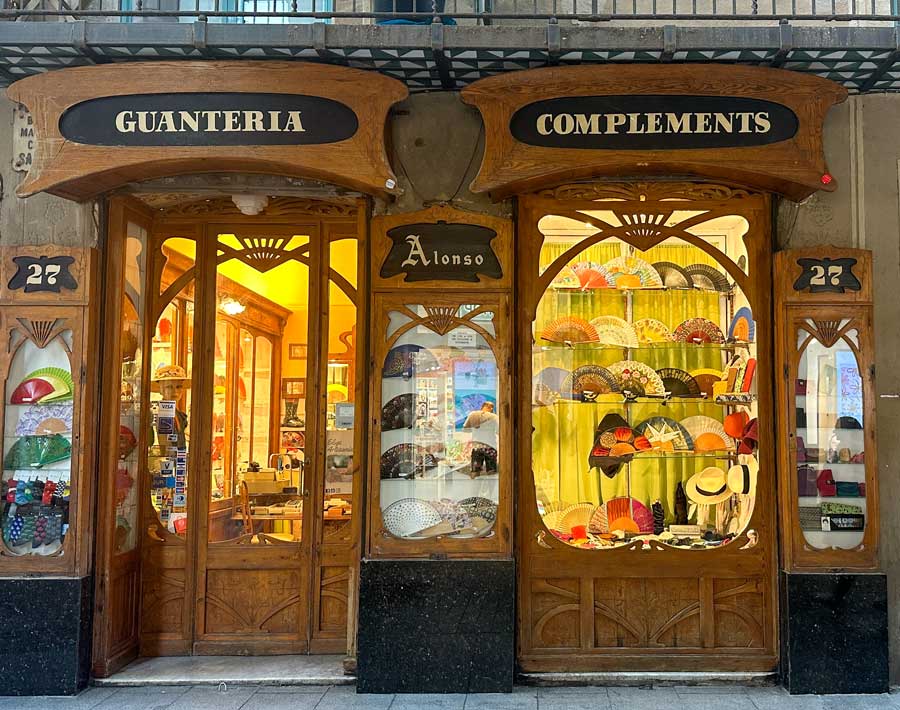
From Santa Anna Street, we head to Del Call Street 2, where we find Sombrerería Obach. It is said this place inspired Antonio Fortuny’s hat shop, even though the author places it in the Sant Antoni neighborhood. And other iconic spaces in the city that appear in the book can also be found in this area: the Ateneu Barcelonès, where Daniel meets Clara, or Els Quatre Gats:
“Els Quatre Gats was a stone’s throw from home and was one of my favorite corners in all of Barcelona. It was there that my parents had met in ’32 (…)”
Born quarter: variety of scenarios
In this quarter, we also find famous settings from the novel. On Montcada street is the Asilo de Santa Lucía, and also the well-known bar El Xampanyet, which remains one of the city’s most iconic bars today. We also find the Església de Santa Maria del Mar, where Bernarda, the Barceló family’s maid, used to pray.
Nada, Carmen Laforet
And among the most famous literary trails in Barcelona, we also find “Nada” by author Carmen Laforet. One of the most recognized classic novels in the Spanish literature.
Eixample Esquerre: where Andrea lived and studied
Andrea, an 18-year-old orphan, arrives in Barcelona to study at the University of Barcelona. Her arrival at night, at the historic Estació de França, is the first Barcelona setting that appears in the novel. From there, she will move to Eixample, to her grandmother’s house where her large family of uncles and aunts also live. In the midst of the Spanish post-war period, this apartment on Aribau Street will be the main setting that reflects the harshness of an era. And the apartment was probably located at number 36 on Aribau Street, as that’s where the author, Carmen Laforet, lived.
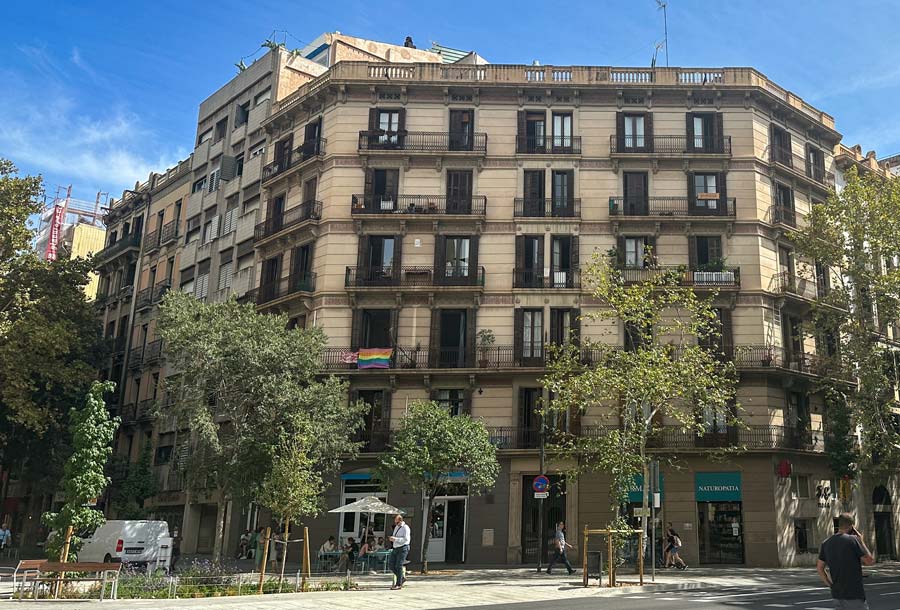
The University of Barcelona, specifically the Faculty of Philology and Communication, is another important setting in the novel. This is where Andrea studied, and also the place with the key to access a world very different from her own. It’s where she will meet her friend Ena, from an affluent family.

Ciutat Vella: Andrea’s nighttime walks
Ena, a character who will become important to Andrea, lives on Via Laietana. There, Andrea will attend more than one event organized by Ena’s family, to the sound of the piano played by her friend’s mother. This neighborhood will also be the backdrop for passages where Andrea experiences solitude: her nighttime walks around the Barcelona Cathedral and Les Rambles.
Born: Guíxols’ studio
At the University of Barcelona, Andrea will also meet Pons. He is from an affluent family, through whom she will get to know his bourgeois friends who gather at Guíxols’ studio on Montcada street.
Raval: location of Gloria’s secret job
On Tallers Street is the restaurant Andrea describes as inexpensive, where she could eat without spending too much money. Raval will also be the setting for the disputes between Gloria and Juan. Specifically, in Plaza Salvador Seguí is where Juan will find Gloria, the location of her secret job. An area that Angustias, Andrea’s aunt, always reminds her not to step into under any circumstances.
La Plaça del Diamant
Probably one of the most iconic books in the Catalan literature, written by one of the most iconic writers, Mercè Rodoreda. The author, who also lived in Gràcia, reflect on the book diverse spots in the neighborhood. If you’re interested in getting to know this author, this route is one of the best literary trails in Barcelona that you can take.
Gràcia: a neighborhood illustrated in a novel
The square Plaça del Diamant is the starting point of the novel, where Natàlia (“Colometa”) and Quimet met. When they finally get married, they moved to an apartment located in Montseny street.
Gran de Gràcia is also one of the main streets featured in the book: for example it’s where you can find the shop “botiga dels hules” or where the tram used to pass. This very street, according to Rodoreda, holds great emotional significance as it was one of the regular places she walked with her mother. Furthermore, it’s on this street where Natàlia and Quimet got married, at 25 Gran de Gràcia, where the restaurant “Cafè Monumental” used to be. They would also visit every Sunday for “fer el vermut” and eat “popets” (small squids). Today, in that very same location, there is a supermarket chain.
Moreover, the local food market in Gràcia, known as “Mercat de la Llibertat,” is likely reflected in the book, but the author refers to it as “Mercat de Santa Isabel”.
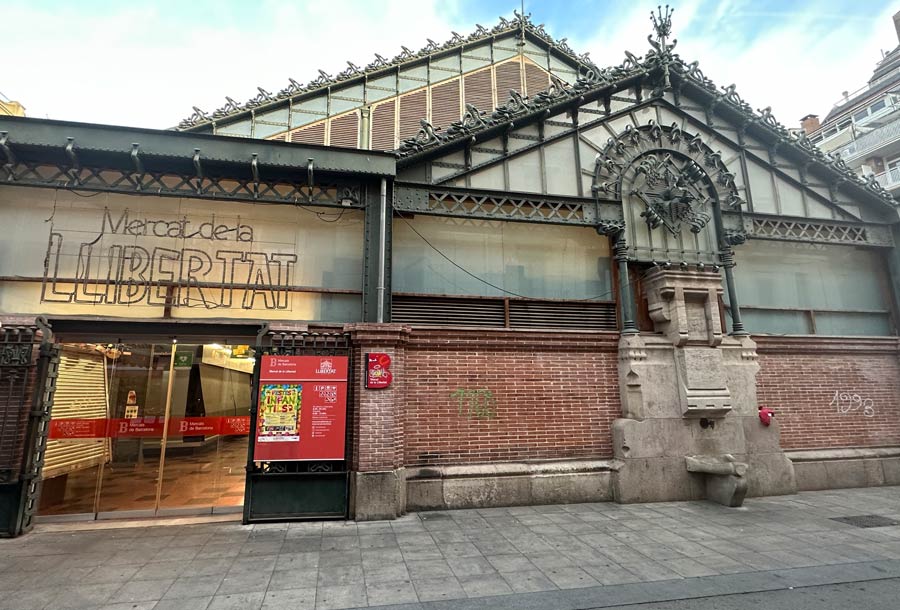
Lastly, another popular spot: Jardinets de Gràcia. When Natàlia is pregnant, she walks around this area for some exercise.
The City of Marvels, Eduardo Mendoza
This book literally encompasses the entirety of Barcelona! Eduardo Mendoza delves into the whole city, tracing its history over the decades from 1888 to 1929. The years when the Universal Barcelona Expositions were held in the city. So, we have highlighted some of the significant locations that appear in the novel.
Ciutat Vella: The beginnings of Onofre
The Parc de la Ciutadella is one of the iconic places in the novel. It’s where Onofre’s beginnings in Barcelona as a pamphlet distributor take place, set against the backdrop of the construction of the future 1888 Barcelona Exposition. Onofre, of humble origins, represents the collective ideals of the lower social classes and will eventually become one of the wealthiest and most influential men.
Through the less touristy streets of the Ribera neighborhood, Mendoza also transports us to that less “marvelous” Barcelona, one that contrasts with its “antagonistic” streets on Passeig de Gracia, the center of economic power.
Montjuïc: 1929 Universal Exposition in Barcelona
The transition from one century to another is reflected in a change of location. Now, Montjuïc takes center stage as it hosts the 1929 Universal Exposition. Therefore, this neighborhood plays a significant role throughout the novel, including the Poble Espanyol, the views from the Museu Nacional d’Art de Catalunya (MNAC), or the Sot del Migdia esplanade.
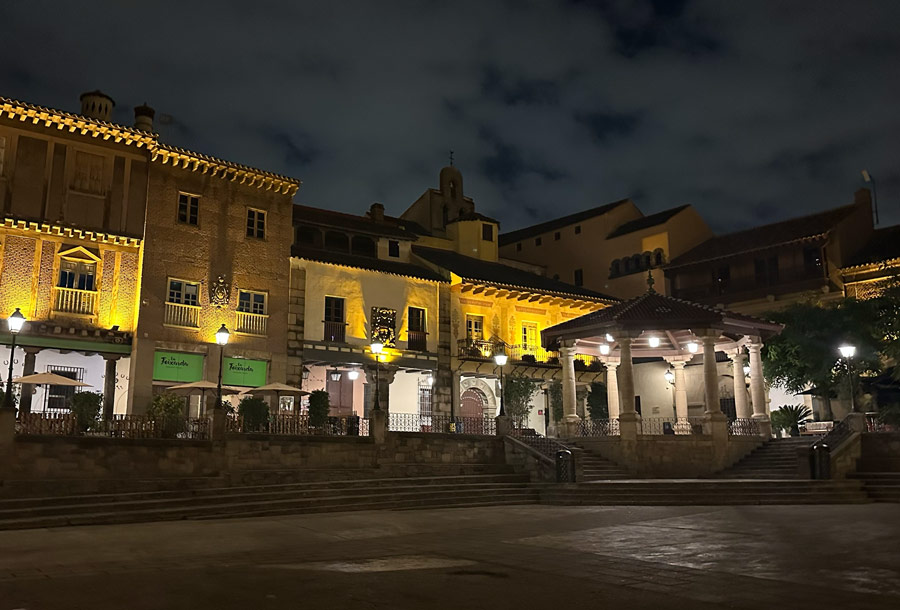
Eixample: Home to the great bourgeoisie
Other prominent locations include Passeig de Gràcia, where the homes of the great bourgeoisie were located. It represented the city’s economic power, with the “Block of Discord” serving as a clear reflection of the most iconic modernist buildings in the city.
Los mares del sur, Manuel Vázquez Montalbán
Pepe Carvalho, a private detective, is the iconic character from the novels of Manuel Vázquez Montalbán. Around 1970, he returned from America and landed in Barcelona…
Les Rambles: the main scenario
Les Rambles and its surroundings will serve as the primary settings where the characters move throughout the novel. For example, the Boquería Market or the office where Pepe Carvalho works, located between Rambla Caputxins and Escudellers Street.
On Las Ramblas, you can also find a historic cafe where the detective used to enjoy a “carajillo”: Cafè de l’Òpera. It’s an iconic place that we recently visited.

Raval: origins of both author and character
Raval is also one of the main scenarios where the central plots unfold. And actually, both Manuel Vázquez Montalbán and Pepe Carvalho, the author and the character, were born on Botella Street in this neighborhood. Bar Pastís and the restaurant Casa Leopoldo are some of the bars mentioned in the novel, located in the Raval district.
Vallvidrera: where the private detective lives
Here, we also find a parallel between the author and the character: in Vallvidrera, a neighborhood far from the city’s hustle and closer to nature, both Pepe Carvalho and Vázquez Montalbán chose to live.
Have these literary trails in Barcelona piqued your curiosity even further about the city? Don’t forget that with the cozycozy accommodation comparison tool, you can discover the best prices in the city. Barcelona is ready to welcome you!
Americans in Barcelona in collaboration with cozycozy.



